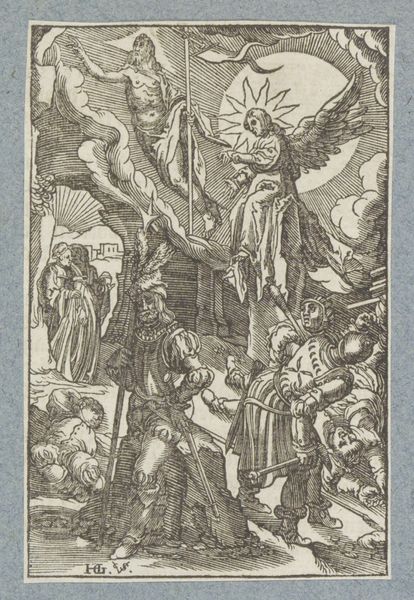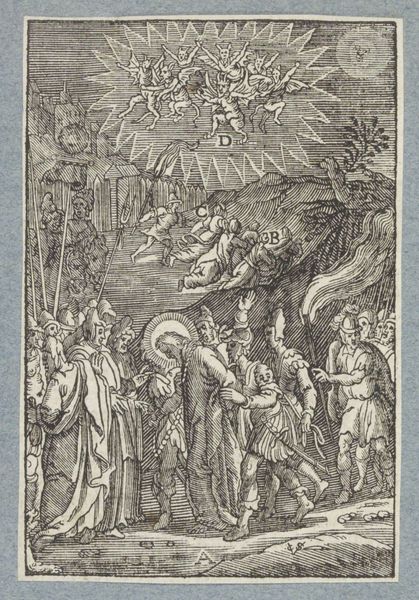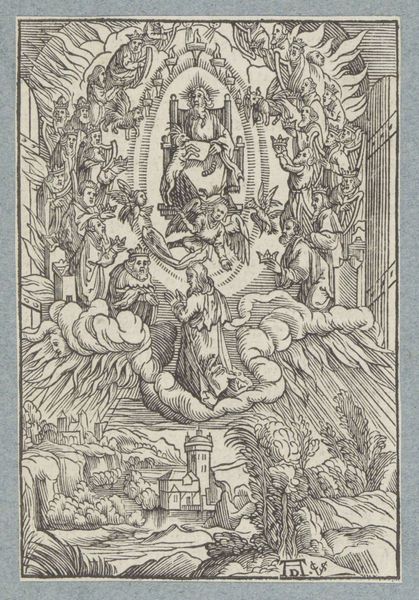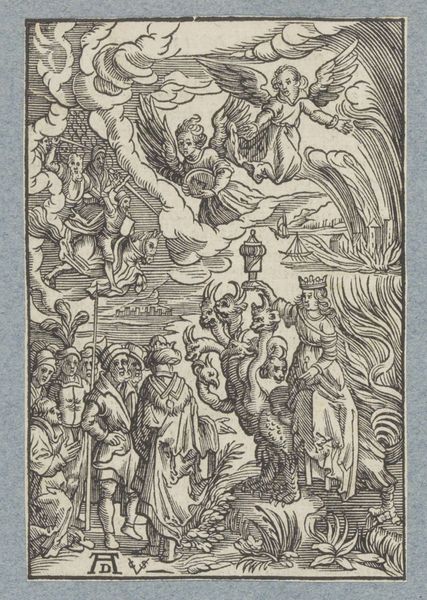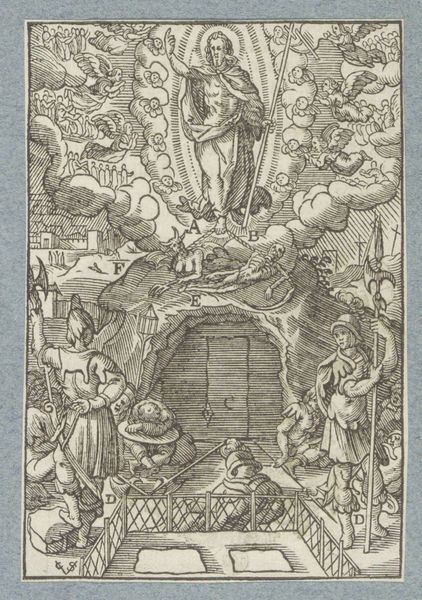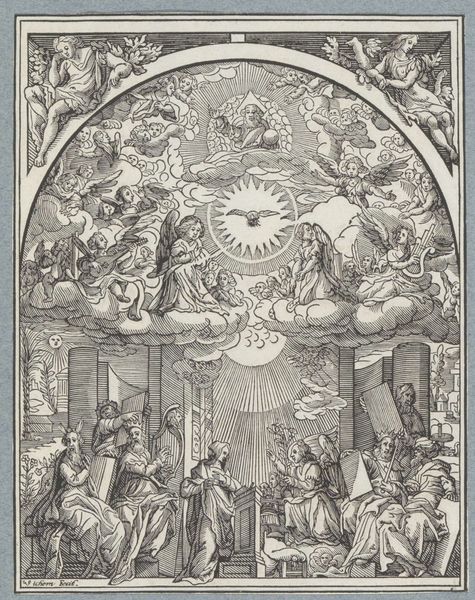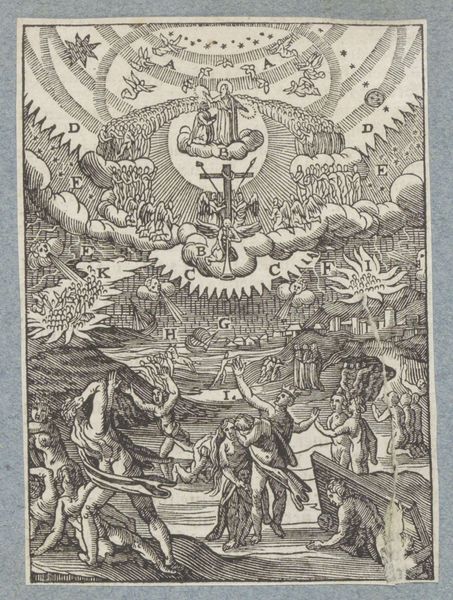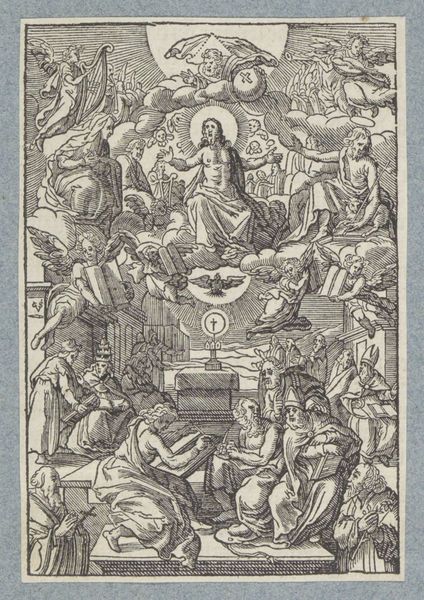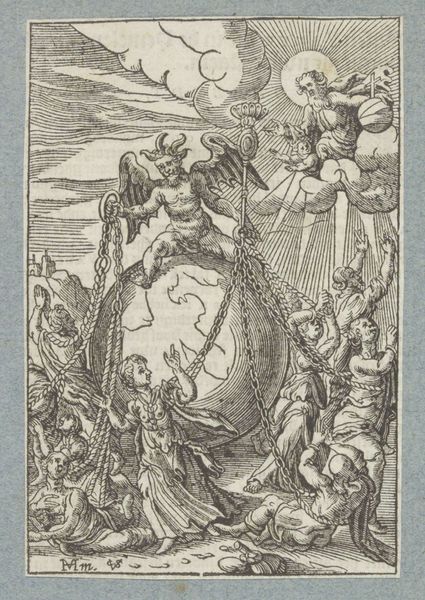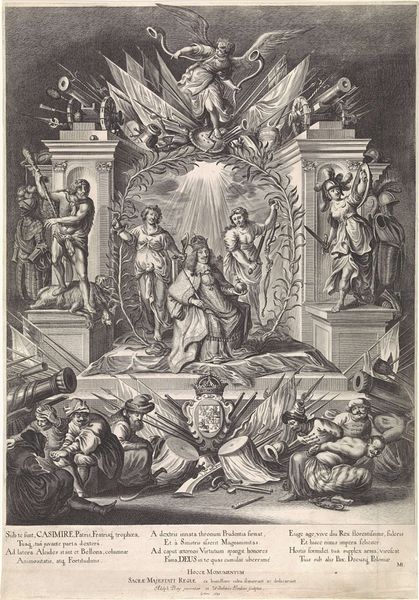
print, engraving
#
allegory
# print
#
mannerism
#
figuration
#
pen-ink sketch
#
line
#
pen work
#
sketchbook drawing
#
history-painting
#
sketchbook art
#
engraving
Dimensions: height 146 mm, width 86 mm, height 213 mm, width 143 mm
Copyright: Rijks Museum: Open Domain
Curator: This engraving, held at the Rijksmuseum, is entitled "Allerheiligen," which translates to "All Saints." It was crafted between 1591 and 1657 by Christoffel van Sichem II. Editor: Whoa, that’s… a lot. At first glance, it feels like a beautifully rendered, albeit crowded, dream. Almost like a celestial yearbook photo gone wild. Curator: Indeed. Van Sichem's use of line, typical of Mannerism, creates a dense tapestry of religious and allegorical figures. Note the hierarchy. At the bottom, you see earthly figures paying homage. Above them, ascending tiers of saints leading towards the Holy Trinity. Editor: The upward gaze really pulls you in. And the frame, populated with musical angels—such a classic Renaissance touch! They remind me of those choir kids who were just a little too enthusiastic. Curator: Angels playing instruments frequently symbolize divine harmony and heavenly celebration. Their placement suggests the merging of the earthly and divine realms. The symbolism of IHS, above the trinity, connects directly to devotion around Jesus' name, a strong symbol by Jesuits, which points toward Christoffel’s devotion. Editor: I can see the Jesuit influence—that direct connection. But all those saints! Does each one carry some specific symbolic weight? The guy with the flag? Curator: Precisely! Each figure carries attributes of their sainthood, offering a complex reading. The flag-bearer may signify triumph or martyrdom depending on the full scene. It’s an art of reading through layers, isn’t it? It's about using shared iconography to deepen one's spiritual understanding and connection. Editor: Like a spiritual "Where's Waldo?"! Seriously, though, there’s something incredibly powerful about visualizing faith this way—packing it with history and meaning. But it does feel a little… prescriptive for today’s eyes. Curator: It’s undeniably didactic, intending to instruct. Its power lies not only in faith affirmation, but a cultural imprint, connecting us to that past understanding and that deep history that we interpret in our moment. Editor: A very historical vision indeed. Seeing all these symbols unlocks stories inside the image and myself. Curator: Agreed. The sheer density reveals the spiritual fervor and visual language from that era. Thank you for noticing and sharing the impact it brings you, right now!
Comments
No comments
Be the first to comment and join the conversation on the ultimate creative platform.
